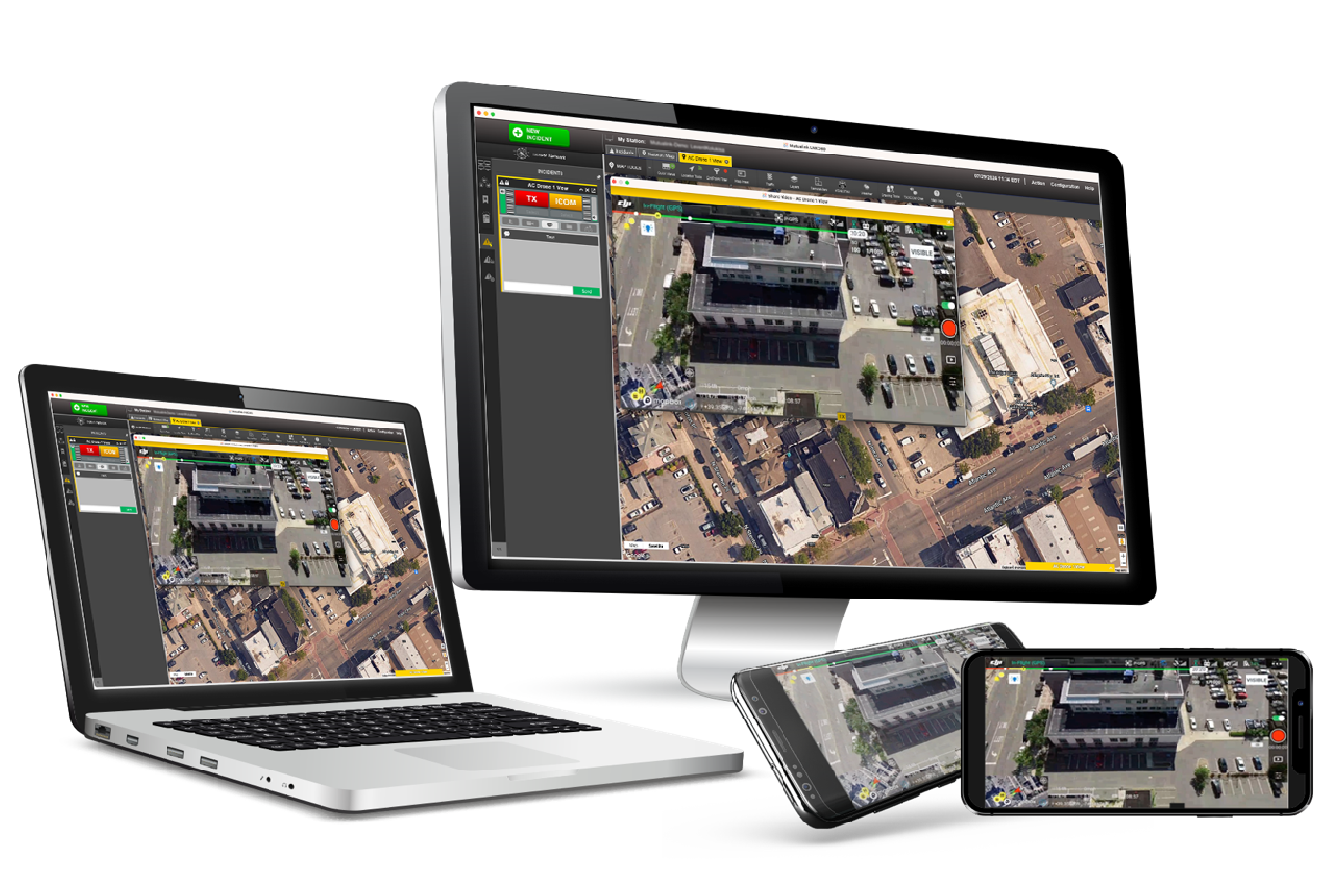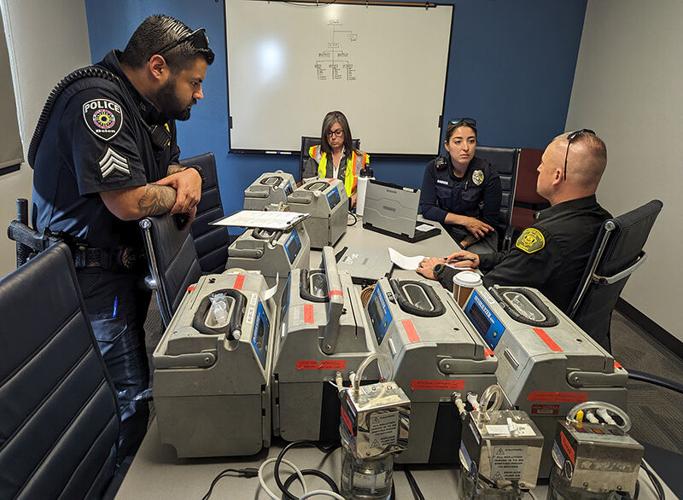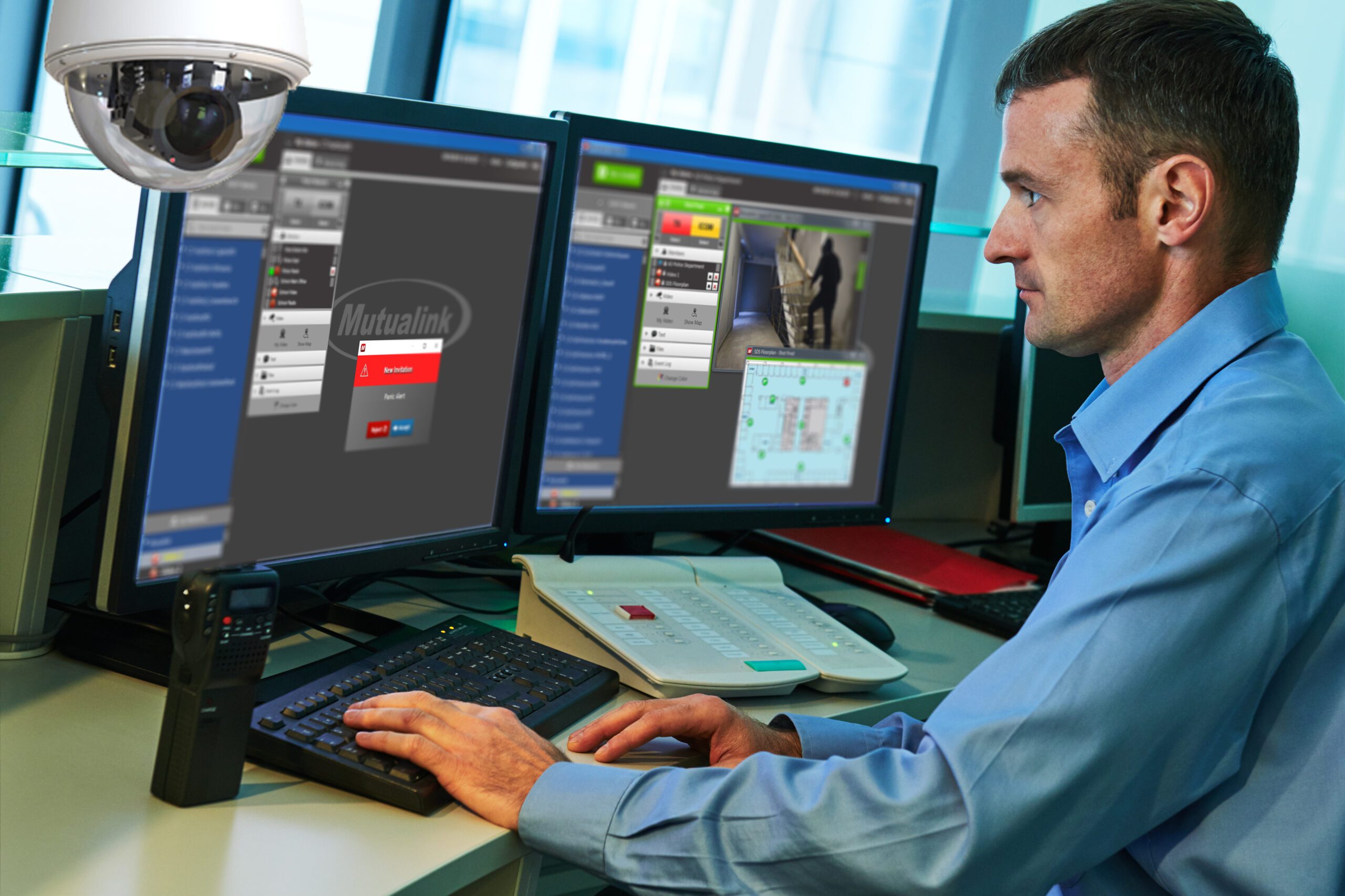By Donny Jackson from Urgent Communications
Mutualink recently unveiled its Wearable Smart Gateway that is designed to let public-safety users securely connect multiple wearable or carried monitors and devices into a lightweight hub powered by Intel’s Edison chip that was developed specifically for Internet of Things (IoT) applications.
With the Wearable Smart Gateway, myriad devices—from biometric sensors to body-worn cameras—can be connected via wire, Bluetooth or Wi-Fi with a paired public-safety user at the lightweight device, according to Mike Wengrovitz, Mutualink’s vice president of innovation. Information stored at the gateway can be shared directly in close proximity via the secure Bluetooth or Wi-Fi links to enable on-scene collaboration, he said.
mutualink-mike-wengrovitz-showcases-new-wearable-gateway-powered-intels-edison-chip
“We basically shrunk down the servers that we use for collaboration now and made them postage-stamp sized—and, by the time you put a battery in it, they become palm sized,” Wengrovitz said during an interview with IWCE’s Urgent Communications. “We took all of the data from all of those things that you were wearing, carrying or were nearby on one side [of the wearable gateway], and on the other side, they telemeter back through a secure tunnel to a command post.
“Once it gets to a command post, using the technology that we already have out there, that command post can share that data with other agencies. That data normally belongs to their people, but, if they want to share that with a hospital or another agency, they do that in the usual way [using Mutualink’s collaboration solution]. So, essentially, we move the edge of the collaboration from the agency out to the first responders.”
If the command post is located further away from the scene, data in the gateway still can be shared via a link to a Band 14 LTE device—functionality that recently was trialed successfully with rugged Sonim handheld devices to support public safety during the annual Urban Shield exercise in California and the International Balloon Fiesta in New Mexico, Wengrovitz said.
“Right now, in the system that we’ve built, it’s a two-piece system, so the wearable gateway is in one pocket and the Sonim Band 14 phone is in the other pocket,” he said. “The wearable smart gateway achieves its connectivity to Band 14 by hopping a couple of feet over to FirstNet phone on Band 14. We also put that in a one-piece solution, where the Edison chip is mounted directly on the back of the Sonim phone in a battery pack, so that you have it all on one appliance.”
Mutualink also is in the process of supporting daisy-chain functionality that will let users link to each other initially to reach an LTE or other wide-area network when located in a facility or structure that lacks such connectivity directly.
In addition to providing basic connectivity, the Wearable Smart Gateway—showcased at the IACP show in Chicago—can detect beacons that are expected to help provide more accurate location information inside buildings or other structures, where GPS location technology typically is not effective, Wengrovitz said.
“At Urban Shield, we dropped [low-power Bluetooth beacons] like bread crumbs along the route,” Wengrovitz said. “The use case is that the first man in [an incident area] would do that and radio back, ‘I got one in the staircase,’ ‘I got one in the entry hall of the school,’ or ‘I got one by door number 26.’
“As you get near these things, that information goes back to a command post, so they know not only GPS—which we also telemeter back through the gateway—but this accurate location stuff.”
Making all of this possible is Intel’s Edison chip, which has a dual-core CPU and single-core microcontroller, as well as integrated Wi-Fi and Bluetooth support in a small, low-power package. With 1 GB DDR and 4 GB FLASH memory, the Edison chip can enable applications that require processing capability.
Patrick Flynn, Intel Security’s director of homeland and national-security programs, said the Mutualink wearable-gateway solution is a logical extension of Intel’s IoT approach and overall product-development strategy.
“It was an opportunity to enable Mutualink to leverage our $10 billion per year in R&D funding to be able make it real,” Flynn said during an interview with IWCE’s Urgent Communications. “One thing that Intel prides itself it on is being able to drive the market. We will take the risk, and we will push these things ahead, because it enables the greater good.
“One of the things that Intel adheres to when we look at something like this on the R&D front is that we ask ourselves the question, ‘Will it change the world?’ This does that. It’s one of things that potentially changes the way that law enforcement communicates, and obviously it segways into our Band 14 mobile chip development. Also, we overlay the security—we have to ensure that it all speaks to each other efficiently, effectively, cheaply but securely.
“In the end, Mutualink had a very sound approach and some serious public-safety buy in on the user. It really spoke to us from a public-safety standpoint, so it was an easy decision to be able to fund this.”
Wengrovitz said that the Edison chip also can be integrated at fixed locations—for example, in lightbulbs, exit signs and fire pull boxes—to provide additional connectivity and location-based services as part of the “Internet of Public-Safety Things” that could be leveraged by first responders.
“It not only can connect securely back over encrypted tunnels to the cloud and the command, but those Internet of Public-Safety Things appliances provide services to first responders—and potentially the general public—that are within range of these,” Wengrovitz said.
“You could use an emergency-exit sign to turn on a special Wi-Fi network that would then telemeter back through Band 14. So, if you had Wi-Fi phones and Band 14 and this Internet of Public-Safety Things device in a school, shopping mall or a building, when first responders enter the building, they get good connectivity by linking back through this Wi-Fi and then out on the side through Band 14 or whatever wired network that is available.”
About Mutualink
Mutualink, Inc. has developed an interoperable communications platform that enables community-wide multimedia sharing of radio, voice, text, video, data files and telephone communications in a secure environment. Mutualink’s system is currently deployed by hundreds of public and private entities worldwide, including homeland security and defense installations, NATO Special Operations Forces, police and fire departments, transit authorities, hospitals, schools, universities, shopping malls, casinos, and more. Mutualink is a privately-held company headquartered in Wallingford, Conn., with R&D facilities in Westford, Mass. and Mayagüez, Puerto Rico, and Defense Services office near Washington, DC. For more information please visit www.mutualink.net.
For More Information & Further Inquiry:
Beth Clay, Mutualink, Inc.
Phone: (203) 774-3474
Email: BClay@mutualink.net




